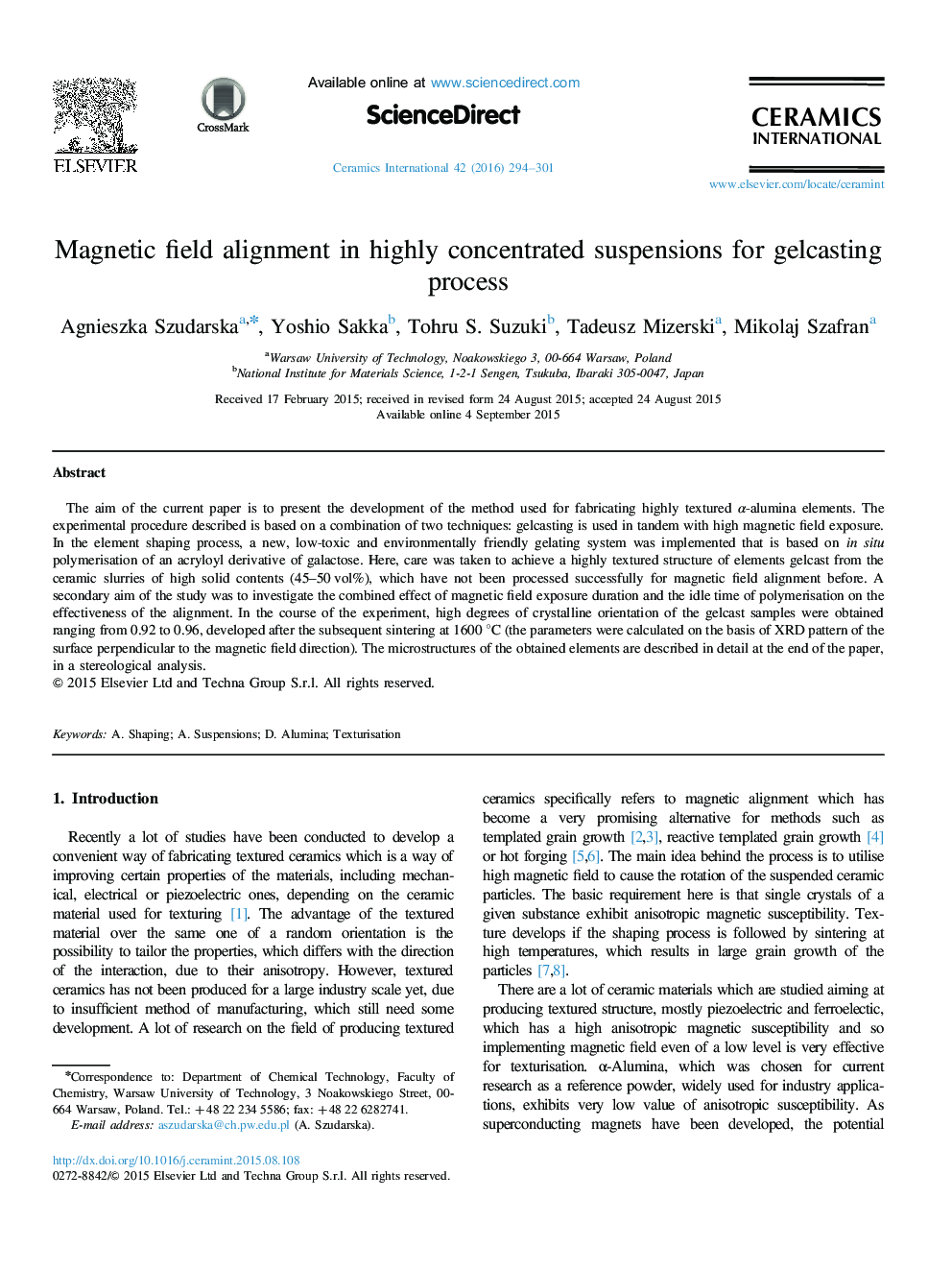| Article ID | Journal | Published Year | Pages | File Type |
|---|---|---|---|---|
| 1459432 | Ceramics International | 2016 | 8 Pages |
Abstract
The aim of the current paper is to present the development of the method used for fabricating highly textured α-alumina elements. The experimental procedure described is based on a combination of two techniques: gelcasting is used in tandem with high magnetic field exposure. In the element shaping process, a new, low-toxic and environmentally friendly gelating system was implemented that is based on in situ polymerisation of an acryloyl derivative of galactose. Here, care was taken to achieve a highly textured structure of elements gelcast from the ceramic slurries of high solid contents (45-50 vol%), which have not been processed successfully for magnetic field alignment before. A secondary aim of the study was to investigate the combined effect of magnetic field exposure duration and the idle time of polymerisation on the effectiveness of the alignment. In the course of the experiment, high degrees of crystalline orientation of the gelcast samples were obtained ranging from 0.92 to 0.96, developed after the subsequent sintering at 1600 °C (the parameters were calculated on the basis of XRD pattern of the surface perpendicular to the magnetic field direction). The microstructures of the obtained elements are described in detail at the end of the paper, in a stereological analysis.
Related Topics
Physical Sciences and Engineering
Materials Science
Ceramics and Composites
Authors
Agnieszka Szudarska, Yoshio Sakka, Tohru S. Suzuki, Tadeusz Mizerski, Mikolaj Szafran,
